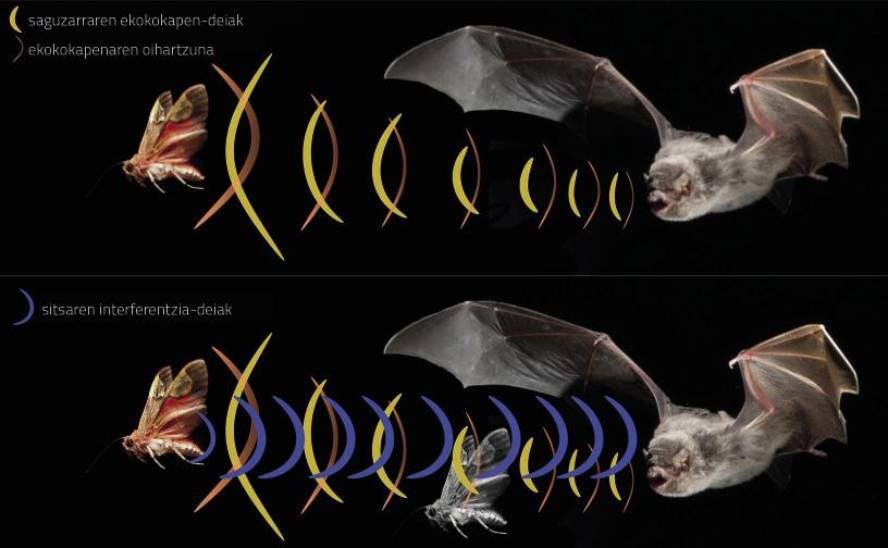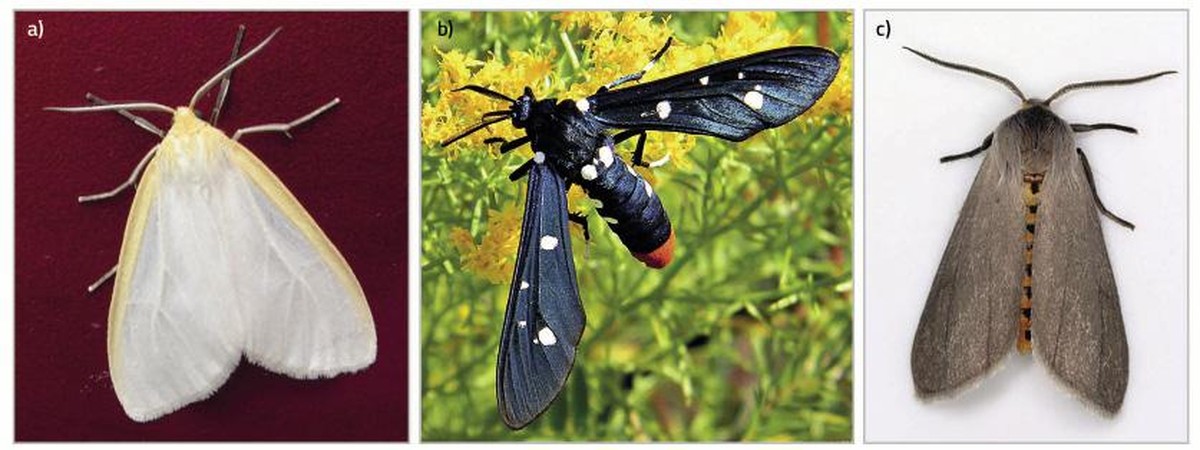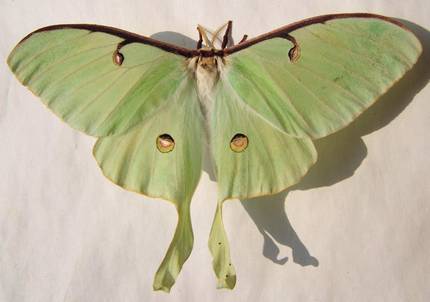Living or dining? Immersed in an acoustic war

The strength of the lion, the elegance of the eagle, the speed of the cheetah, the prudence of wolves... Predator hunting has always interested us. However, fugitive zebras, wild goats, gazelles or deer are a secondary element to tell surprising stories of predators. But the predators, instead of being the kings of the “savannah”, are the hungriest cuitates; the dams are not easy to catch and have a heavy reason for it. Scientists Dawkins and Krebs have defined in 1979 a principle of fondness for life that sustains that the pressure of selection suffered by prey is not at all equal to that of predators: the gazelle has to be the fastest in flight, if it wants to survive, and the cheetah must be the fastest in hunting if it wants to fill the belly. In this competition, the penalty of loss is not at all the same for both parties. Precisely this difference in the selection pressure has caused that, compared to the offensive adaptations of predators, dams have developed a series of defensive adaptations as spectacular as they are curious. I come with the intention of changing our way of seeing the dams, and for this I will tell you the incredible range of capacities of some known dams in our country, the night butterfly or moth.
65 million year career
Sitsek received the attention of many bats 65 million years ago. Compared to hard surface insects, they are an attractive snack with soft and juicy body, bad flying candies. However, they were not able to exploit these candies until in the night absolute darkness they developed a biological sonar to detect these preys: ultrasound based ecofocus. This magnificent technological advance of bats led to the development of one of the most surprising and sophisticated series of escape and defense adaptations we can find in nature. Are chickens as simple as expected so far? Let's see it.
Spare wings to fly
Even though it seems mind-blowing, moths don't need the bottom pair to fly: even cut from the base, they fly perfectly! So why have developed wings maintained for millions of years without functions? According to recent trials by Ithaca scientists, the southern rear pair is responsible for the clumsy flight of sits and butterflies. But in an evolutionary flight of millions of years, why haven't they improved that clumsy flight? If you have ever tried to catch butterflies or chickens, you will have noticed that activity is not easy. We find it very difficult to predict the flight route: they have the ability to unconsciously change the flight direction quickly and at variable speed. That is precisely the fundamental secret weapon of moths, and it is due to an extremely developed southern rear pair. Instead of being functional prolongations, they are part of the range of weapons to prevent bat attacks. Thanks to them, they are able to make tours, spirals and jumps that not even the most skilled pilot, when detecting the presence of bats.
Risk detection
But how do they perceive danger in the absolute darkness of the night? In the 1960s, scientists discovered that the flying behaviour of moths varied considerably in the presence of bats or in the artificial reproduction of so-called bats ultrasound. Nearly half of the chicken species (~140,000) have the ability to hear bats' ultrasound, which is not accidental. When bats developed a new weapon to detect their hunting pieces in the dark and by ultrasound, the chickens developed an early warning system: simple but effective eardrums. According to the family, they are located in the thorax of the cocks, in the abdomen or in the mouth, which allows listening to the ultrasonic calls of most bat species before bats receive the echo of the calls. This capacity can increase by 40% the chance to escape a bat attack.

The change of course in the defensive response of many species, the continuous turn in the air, or the fall to the ground, and the development of much more complex physical and chemical defensive responses by other species, such as tiger mushrooms, have turned them into masters of bat artifacts.
Acoustic mimicry
In nature, poisonous or tasteless animals warn predators of their danger by striking colors. They are called aposematic animals. Many poisonous species have developed similar color models to face the same predator (Müller mimicry). Others, without being dangerous, mimic poisonous to avoid risk (Bates mimicry). Many tigre-sits are bright colors. But in the darkness of the night the colors are worth little, if the bats do not realize the danger, right? The ugly tiger have kept the bright colors to warn the predators of the day. By night, however, they have learned to use the same language as bats: in addition to being able to hear ultrasounds of sweeping calls from predators, they are able to emit similar ultrasound through specific organs oriented to it. It is precisely ultrasound that serves to warn bats of their toxicity, aposematic sounds. Bats quickly learn to relate the sounds emitted by Cycnia tenera and the aposematic sits of unpleasant taste (Figure 2a). Taking advantage of this advantage, Syntomeida epilais has learned to imitate the sounds emitted by the species C. tenera, becoming its aposematic müllerian. Although for us they are chickens of very different colors, bats hear the same (Figure 2b). The species Euchaetes egle has also not wanted to stay behind, and although it has no unpleasant taste, it has become an aposematic batesian of the two previous mimicking their ultrasonic calls (Figure 2c). Recent studies suggest that bats are able to distinguish sounds from good taste and bad taste pega species. However, bats avoid both types of chickens. Apparently of good taste, wrong, is probably due to the hard sorrow that bats would suffer when eating poison.
Sound interference
And although the sound strategies of tiger mushrooms are surprising and effective, it is not their most mind-blowing trick. Verholdia trigona tigre-pega has developed an even more complex acoustic trick: it is non-toxic and does not mimic its toxic relatives, interferes in the recall calls of bats using very high frequency sounds (Figure 1). To understand how interference can occur, we will see in a simple way how bats calculate the spatial position of the cock: they take advantage of the repercussion generated by their recall calls when touching the sits to calculate the distance of the prey. According to the oscillatory interference hypothesis, high frequency calls generated by B. trigona moths are mixed with echoes of bat sweep calls, making it difficult to calculate distances from bats. In 2011, Corcorqué and his colleagues tested the hypothesis: Bats who wanted to hunt B. trigona constantly lost their prey at close distances whenever it made anti-frequency calls. Everything goes between 2 milliseconds!

Ornamental or defensive mechanism?
The tiger is not the only one able to do acoustic tricks. The lunar mushrooms of the Saturnidae family are known for their long and elegant clays (Figure 3). The skirts of this group have no organ to listen to the sweeping calls of bats, so they cannot escape by detecting the bat. But lunar sticks do not need eardrums, because thanks to their long tails they have developed a surprising acoustic trick against bats. When flying they direct the attack of the bats towards the prolongations of the wings and manage to escape. Although the concrete change caused by tail movements in echoes of echolocation calls is not yet known, the attention of bats is diverted from the body of the glue to prolongations in more than 50% of attacks. Due to this effect, in 2015, Barber and his partners defined this new defensive arrangement unknown among animals with the name of acoustic refraction. The researchers demonstrated that the prolongations do not affect the efficiency of the flight and that they have emerged in four different stages between the saturns throughout the evolution. Therefore, instead of being a mere ornament, the elegant appendages of moth wings are effective adaptations against bats.
Although more than half of the chicken species are able to detect the ecoenco of bats, more than 65,000 species do not have this organ. However, bats are in an acoustic war, an evolutionary race that has lasted millions of years and still faces predation of bats every night. There are several curious adaptations that we have left untold in this story, but the discoveries of recent years suggest that the diversity of adaptations and strategies against bats can be much higher than previously thought. Moreover, they have helped us to know the limits of the excellence of bat sweeping system.
In the warm summer nights they often come crazy in the light of home. After reading this article, I hope to see as authentic acoustic warriors the moths we have so far considered as disgusting insects. And if not, try to catch him! When you see excellent hunting adaptations for predators, remember that they are largely as they are due to the spectacular exhaust adaptations of their prey and vice versa. Live or dinner!
Bibliography
Work presented to the CAF-Elhuyar awards.






